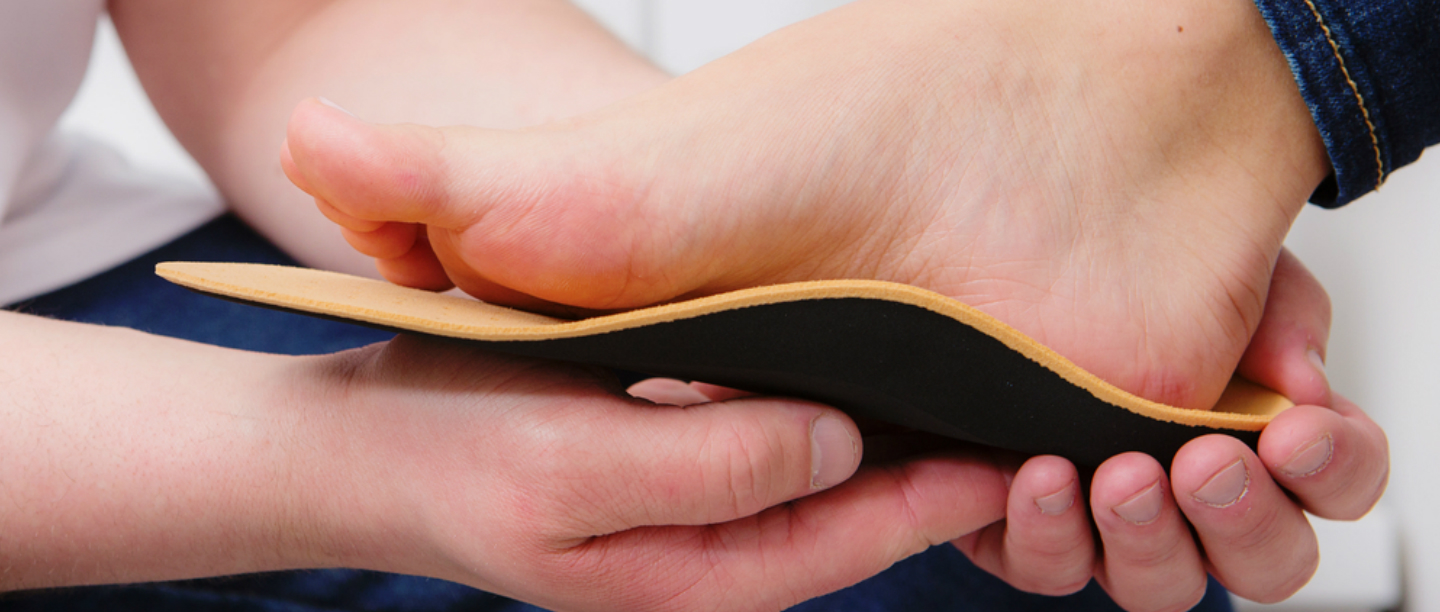People who suffer from a flat foot have either no arch in the curve of their foot or one that is very little. In hindsight, this means that one or both of this person’s feet could be flat on the ground. Medically, this condition is called pes planus or fallen arches and is a postural deformity that could cause your foot to make complete or almost complete contact with the ground. The arch in your foot is meant to help evenly distribute your body weight across your feet and legs, which is why these arches determine how a person walks and moves. Now, if you have a flat foot then you are more likely to roll your feet towards the inner side, especially when you’re walking or standing.
How Can I Diagnose My Flat Foot?

If the arch on your feet is too little or non-existent then you must visit the doctor about the same. The doctor will then view the mechanics of your feet and prescribe a pair of shoes or flat foot exercises to help the discomfort. The most common flat foot problems include the pain you experience around your heel and ankle. You could also have possible swelling in the arch of your foot and lower frequent backaches.https://www.popxo.com/2019/05/everything-you-need-to-know-about-metatarsal-foot-pads/
What Causes A Flat Foot?
The most common cause of a flat foot is the genetic factors, as flat feet can pass on from a parent to the children. Some people even suffer from weak arches, which means that even though they weren’t born with this condition, the arch of their foot is visible when they sit but flattens as soon as they stand or apply pressure.
Causes of flat foot also include a foot or ankle injury or a case of arthritis or rheumatoid arthritis. If there is any damage, dysfunction, or rupture caused in the posterior tibial tendon (which goes along your heel and ankle), you may suffer from flat foot. The condition can also be caused by the harm done to the nervous system or muscle diseases, such as cerebral palsy and muscular dystrophy.
What Are The Disadvantages Of Having A Flat Foot?

The most common disadvantage of a flat foot is the pain and rigid feeling of stiffness that accompanies it along the heel and ankle. A flat foot can also cause disbalance amongst some people due to the uneven distribution of weight, making you more susceptible to falls and injuries around your ankle. Since a flat foot also alters the way you walk, it could result in problems with your posture and pain along your neck, back, knee, hip and feet. Weight-bearing exercises like hiking and running can often worsen the symptoms if you aren’t wearing the right shoes or arch supporters.
Can Flat Foot Be Treated?
A flat foot can be treated in various different ways, sometimes wearing the right shoes can make all the difference and in other cases, doctors give a series of flat foot exercises to help the patient.
Flat foot Exercises
- Heel Cord Stretching: In this exercise the aim is to stretch your tight Achilles tendon. So face a wall, put your hand on eye level and keep one foot, a step behind another. Make sure that the heel of both your feet touch the ground and you feel a stretch in your back leg. Hold this position for 30 seconds and rest for another 30 seconds. If both your feet have a flat foot then repeat it with the other foot at the back, twice a day.
- The Golf Ball Roll: For this exercise you need to sit on a chair and put a golf ball under your feet. Roll it forward and backwards for 2 minutes, while applying pressure on the ball. This will stretch the ligament that connects your heel to the front of your foot, called plantar fascia ligament.
- Arch Lifts: In this exercise, you need to stand up straight with your feet directly under your hips. Now shift the weight of your body to the outside arches of your feet and then roll your feet back down. Repeat this for 2-3 sets, each set consisting of 10-15 repetitions.
- Calf Raises: While standing on a flat surface, lift your heels up as high as you can, shifting your body weight to the front of your feet. Hold this position for about 20 seconds, taking the support of a wall if necessary. Do 15-20 repetitions of this exercise 2-3 times in a day.
- Toe Raises: While standing straight, keep your right big toe grounded and try lifting the other four toes off the ground for 5 seconds. Then try keeping the rest of your toes grounding and lifting the big toe off the ground. Hold each lift for 5 seconds and repeat the exercises with your left foot. Do this exercise 5-10 times for each foot.
- Towel Curls: This is the simplest exercise out of the lot. While sitting on a chair, put a towel on the floor, place your feet on top of the towel and trying curling up the towel with your toes. While scrunching up your toes, try pushing your toes into your foot while keeping your heel firmly grounded. Repeat this exercise 10-15 times, at least twice a day.
- If your doctor believes that the exercises given to you are not curing the condition then they may suggest physiotherapy for as a part of your flat foot treatment.
Flat Foot Shoes
When it comes to picking the right flat foot shoe, you need to look for three things, provide cushioning, control pronation (help balance the feet in a neutral position) and reduce the friction of the foot within the shoe. In some cases the doctor might recommend arch support insoles or custom orthotic devices that can be inserted into your normal shoes, this depends on the condition of your flat foot. Here are some basic tips that will help you pick the right shoes for your flat foot:
- Casual Shoes: Casual shoes like flip-flops, high-heels and clogs aren’t ideal for people who suffer from a flat foot. The best way to wear your everyday shoes is to insert arch support insoles. However, the most common brand for casual shoes that caters to people with flat feet in India is Clarks. So if you are looking to invest in a good pair, this brand will have your back. Shoes for flat feet also go by the name ‘neutrals’ in case you are looking for them in other brands.
- Orthopedic Shoes: Orthopedic shoes are specially made for people who need stable, wider and more accommodating insoles. These shoes have well-padded collar but are often too stiff and firm, which is why they put off most people. But if you have a flat foot then picking an orthopedic shoe is a good choice for you. Ortho Rest, Bata and Med Life are some of the brands that made these kinds of shoes in India. You can also consult your doctor if you are looking for a shoe with a specific feature.
- Stability Running Shoes: Most activewear shoes aka sneakers are stability running shoes. These shoes offer a bit of cushioning for people whose feet roll inward when they walk or run. Mainstream brands like Adidas, Puma and Nike make shoes that offer extra cushioning towards the arches to make things less painful for people who have a slight or medium flat foot.
- Sandals Are A Strict No-No: Sandals and open shoes with ‘arch supports’ aren’t a one-size fits all. If they fit your arch, then take it slow and try them for a short period of time. However, chances are they won’t fit the arch on your foot perfectly because they are made in one standard size, in that case, avoid them altogether and opt for arch support insoles instead.
Flat foot can be dealt with easily and will not hinder your everyday activities like running, jogging and playing sports if you deal with it in the right manner. All you need is a good pair of insoles and shoes that love you and then there is nothing you can’t do.
Also Read Home Remedies To Get Clean Feet
Featured Image: Shutterstock
POPxo is now available in six languages: English, Hindi, Tamil, Telugu, Marathi and Bangla.
Love all things colourful and cute? Take it up a POP with POPxo Shop‘s collection of super fun mugs, phone covers, cushions, laptop sleeves and more!



